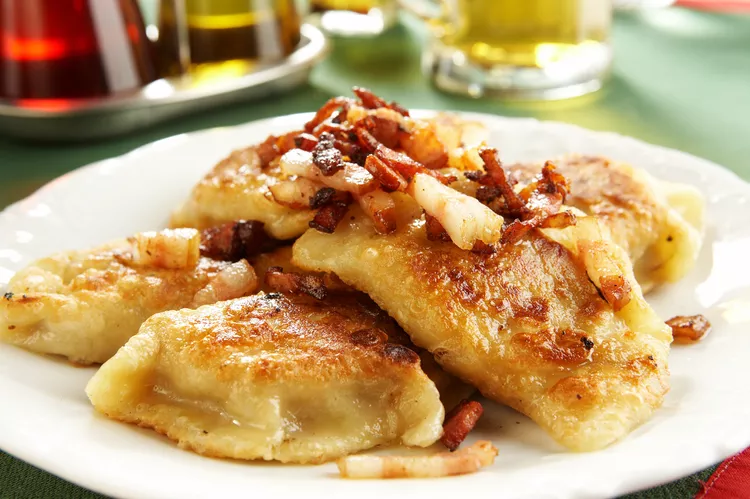Poland’s Traditional Cuisine: A Culinary Journey
When it comes to visiting Poland, sampling the traditional Polish cuisine—which was suppressed along with other aspects of Polish culture during Communist times but has made a comeback with a new generation of chefs reinventing old favorites—has become a favorite for foreign travelers.
Modern Polish cuisine is flavorful, hearty, and complex, reflecting a lighter take on traditional dishes to accommodate contemporary palates. Like many Eastern European countries, Poland’s traditional foods are rooted in Slavic fare. Moreover, Polish food also shows influences from Italian and French cuisines, dating back to the medieval Polish court.
Potatoes are a staple of the Polish diet, serving as a foundation for various dishes. Cream and eggs are heavily used, although modern interpretations of some classics may employ lighter alternatives. Additionally, traditional Polish cuisine features numerous soups made with mushrooms, broth, and beets.
Fish dishes are popular, especially in regional Polish cuisine. Carp, pike, perch, eel, and sturgeon are commonly served in various preparations, while herring is a staple on the Polish holiday menu. Although pork is the predominant meat in traditional Polish food, chicken, beef, venison, duck, and other meats are increasingly featured on Polish restaurant menus today.
Pierogies: Fried or Steamed Dumplings
The traditional dumpling on every Polish grandma’s menu is called a pierogi. While other Eastern European and Slavic cultures have variations of pierogi that trace their roots to Russia in the Middle Ages, Poles have made this dish uniquely their own.
Pierogies consist of dough filled with cheese, potatoes, onions, cabbage, mushrooms, meat, or nearly any other ingredient, sweet or savory. They are traditionally served steaming hot, either boiled or fried, often accompanied by sour cream.
Bigos: Hunter’s Stew

Considered a meal in and of itself, bigos is a hearty hunter’s stew combining cabbage, mushrooms, and assorted meats. Traditionally, this dish features pork, bacon, or Polish sausage, but today it may also include venison or duck.
The stewing process may last from two to four days when following Polish traditions, allowing the flavors to meld beautifully. However, many modern restaurants often prepare bigos overnight due to its popularity among locals and tourists alike.
Zrazy: Grilled Beef Rolls
Zrazy is a traditional Polish meal that’s hearty and filling. A mixture of bacon, breadcrumbs, mushrooms, and cucumber is rolled inside a seasoned slice of sirloin beef, then fried or grilled to allow the flavors to marry perfectly.
This dish originates from the Polish gentry and is often known as a hunter’s meal, as it was traditionally prepared with slices of beef or game meat, such as pork or venison. You’ll find variations of this dish in Lithuania, Belarus, and Ukraine, but it’s a staple in many traditional menus throughout Poland as well.
Placki Ziemniaczane: Potato Pancakes

Potato pancakes, known locally as placki ziemniaczane, are a beloved side dish or appetizer in Poland. Made from grated potatoes mixed with egg, onion, and spices, they are fried in animal fat, yielding savory treats often served with a light sprinkling of sugar. Additionally, placek po zbojnicku includes these potato pancakes alongside meat, sauce, and salad.
Mizeria: Cucumber Salad

This chilled salad features thinly sliced cucumbers, sprigs of dill, and chopped onion in a dressing of sour cream and lemon juice. It’s commonly served with main dishes like Zrazy or Bigos, yet it also makes a refreshing afternoon snack on its own.
Sernik: Polish Cheesecake

Poland’s version of traditional cheesecake, known as sernik, is made from quark (twaróg in Polish). Quark is a cheese produced by warming and curdling soured milk, and it combines beautifully with mashed potatoes used in pierogi filling. In pre-Communist Poland, quark was more accessible, offering the characteristic sour/sweet flavor we associate with cheesecakes today.
Szarlotka: Apple Tarts

Similar to the American apple pie, the Polish szarlotka holds a special place in the hearts of its people. However, the crust of Polish apple tarts is sweeter and created with butter and egg yolks, distinguishing it from most other apple pie crusts. Together with sernik, szarlotka is one of the most popular dessert options found in Poland today.
Eklerka: Éclairs

Originally French in origin, these steamed dough confections have become a cornerstone in Polish bakeries. Filled with whipped cream or various flavored creams and coated in glaze or chocolate, these éclairs are a year-round favorite in most sweet shops.
Makowiec: Poppy Seed Swirl Cakes

Traditionally enjoyed during the Easter holiday, these sweet rolled cakes are filled with dark fruit and nuts. Common ingredients for the filling include poppy seeds, walnuts, raisins, honey, and lightly whipped egg whites. The dough for these cakes is rather yeasty, leading to a delightful interplay of savory and sweet flavors, making them perfect for the holiday season.
Paczki: Deep-Fried Custard-Filled Dough

Perhaps the most famous dessert from Poland, paczki starts as round, deep-fried dough balls filled with custard or fruit preserves. Traditionally, these treats are enjoyed on the Thursday before Ash Wednesday at the beginning of Lent, and they are usually dusted with powdered sugar or icing. Pronounced “punch-key,” these delectable pastries can also be found in American cities with large Polish populations, such as Detroit, where they are eagerly anticipated on Paczki Day.





